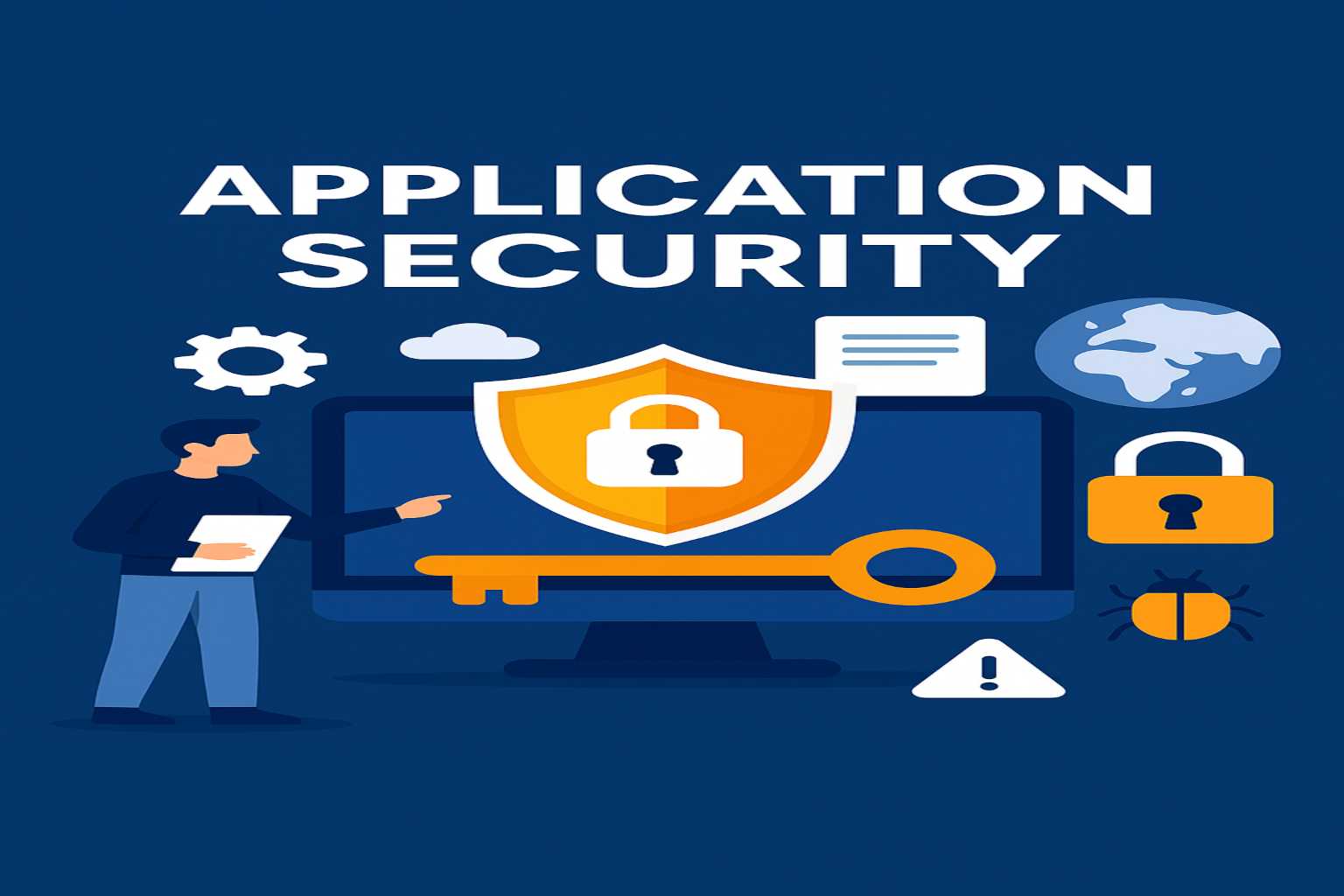Application security means ensuring that any software application is secure against cyberattacks and vulnerabilities during its design, development, and deployment. In the modern world, every business and organization relies on digital platforms. This has made application security extremely important.
Application security threats include hackers, malware, phishing attacks, and unauthorized access. If proper security measures are not taken, sensitive data can be leaked, leading to financial loss and reputation damage.

Types of Application Security
There are two main types of application security:
Static Application Security Testing (SAST):
- It analyzes code during the software development phase.
- It identifies bugs, vulnerabilities, and potential threats.
Dynamic Application Security Testing (DAST):
- It analyzes the application’s runtime behavior.
- It detects vulnerabilities by simulating real-world attacks.
Interactive Application Security Testing (IAST):
- It is a combination of both SAST and DAST.
- Detects vulnerabilities both during development and runtime.
Software Composition Analysis (SCA):
- Detects security flaws in open-source components and third-party libraries.
- It ensures that your application dependencies are secure.
Why is Application Security Important?
Data Protection:
- Personal and sensitive data leaks can lead to identity theft and financial loss.
Compliance Requirements:
- Following regulations like GDPR and HIPAA is essential.
- Non-compliance can result in heavy penalties.
Business Reputation:
- Security breaches can lead to loss of customer trust.
- This has a negative impact on brand reputation and business growth.
Cost Efficiency:
- Fixing vulnerabilities early is cheaper than post-deployment fixes.
- Common Application Security Threats
SQL Injection:
- Attackers can access sensitive information by manipulating database queries.
Cross-Site Scripting (XSS):
- Malicious scripts can execute in user browsers.
- Broken Authentication:
- Weak authentication mechanisms can lead to unauthorized access.
Sensitive Data Exposure:
- Failure to encrypt data can lead to confidential data leakage.
Security Misconfiguration:
- Default settings or unpatched vulnerabilities can become entry points for attackers.
Best Practices for Application Security
Code Security:
- Follow secure coding practices.
- Implement input validation and output encoding.
- Regular Security Testing:
- Perform SAST, DAST, and penetration testing.
- Use automated testing tools.
Access Controls:
- Implement role-based access control (RBAC).
- Use strong authentication and multi-factor authentication.
Encryption:
- Encrypt both data at rest and data in transit.
Patch Management:
- Update software and libraries regularly.
- Patch known vulnerabilities.
- Monitoring and Logging:
- Monitor application activities.
- Maintain logs to detect suspicious behavior.
Modern Application Security Trends
DevSecOps:
- Security is integrated into development and operations.
- Threats are detected through continuous monitoring and automation.
AI and Machine Learning:
- Use of AI/ML tools for threat detection and anomaly detection.
Zero Trust Security Model:
- No user or device is trusted by default.
Every access request is continuously verified.
Cloud Application Security:
- Advanced security tools and encryption protocols are essential for cloud-based applications.
Application Security Tools
- OWASP ZAP: Open-source web application security scanner.
- Burp Suite: Popular tool for penetration testing.
- Veracode: A cloud-based platform for both static and dynamic testing.
- Checkmarx: A code security and vulnerability management tool.
Network Security Importance, Threats & Best Practices
Conclusion
Application security is critical for every organization in today’s digital age. Secure applications not only protect sensitive data but also safeguard business reputation and compliance requirements. With proper planning, testing, and monitoring, you can protect your applications from modern cyber threats.
FAQs
What is the difference between application security and network security?
Application security focuses on the software level, while network security protects network infrastructure and communication channels.
Can a firewall alone secure an application?
A firewall only protects the network layer. Fixing vulnerabilities at the application level is also essential.
How to keep open-source components secure?
Use and regularly update Software Composition Analysis (SCA) tools.
Why is DevSecOps important?
DevSecOps integrates security into the development process, allowing vulnerabilities to be detected and fixed early.
Why is encryption important?
Encryption protects data from unauthorized access and helps meet compliance regulations.